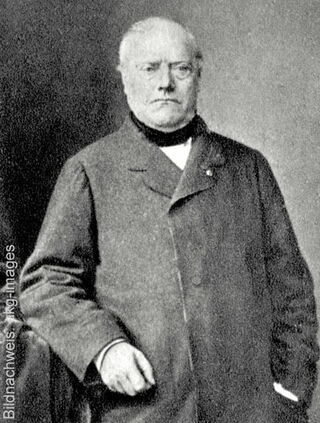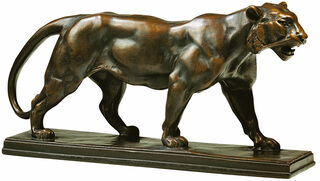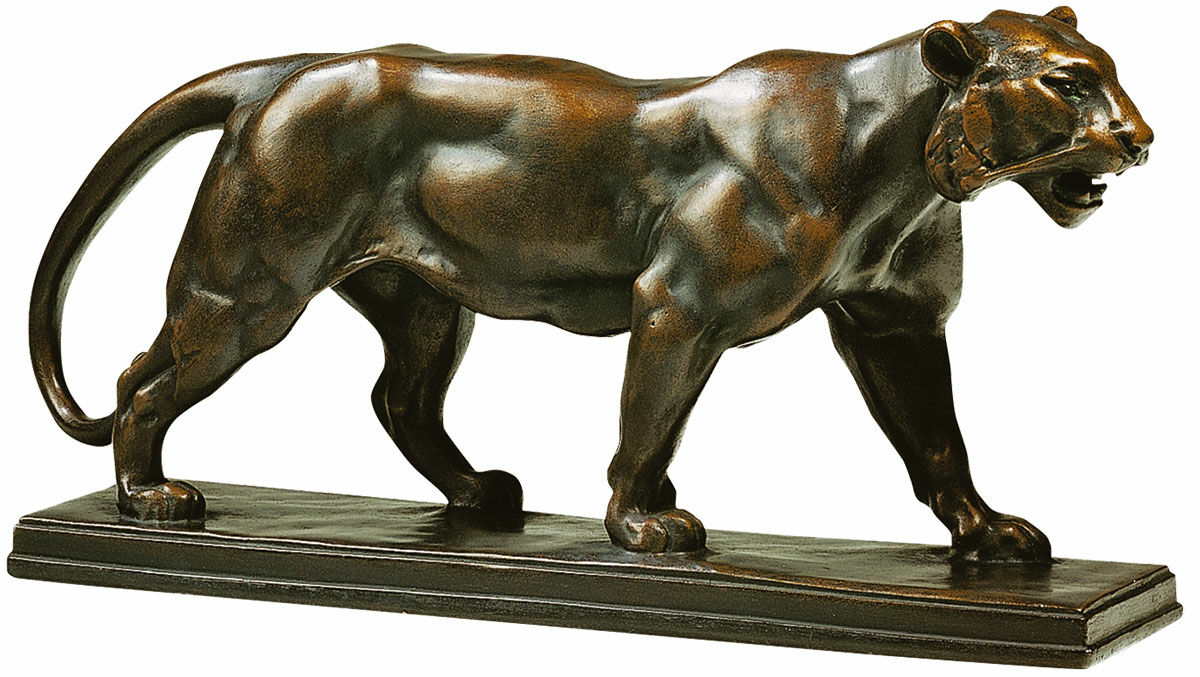Sculpture "Panther", bronze version
Sculpture "Panther", bronze version
Quick info
museum replica | bronze | handmade | patinated | length 39 cm | height 21 cm
Detailed description
Sculpture "Panther", bronze version
This magnificent animal sculpture is a combination of serenity and drama: the hunting feline with its reflecting, tense muscles and tendons impresses with the violence of its expression and the energy of its movement.
Original: Musée du Louvre, Paris.
ars mundi museum replica, cast by hand and patinated. Edition in bronze, cast using the Lost-Wax-Process. Length 39 cm. Height 21 cm.

About Antoine-Louis Barye
1795-1875
At the Paris Salon of 1831, Bayre caused a sensation with his sculpture "Tiger Devouring a Gavial Crocodile". He was the first to introduce such dramatic and veristic scenes into 19th-century sculpture, which were only similar to the art of Eugène Delacroix. Barye no longer saw the animal as the symbolic carrier of meaning but depicted it in its various genres and their peculiarities.
Extensive studies in the Jardin de Plantes and the National Museum of Natural History in Paris enabled him to create precise representations of nature. In doing so, he took the sculpture out of academic Classicism and contributed to its departure into the modern age.
The son of a goldsmith was born on September 24, 1795, in Paris and received his first training from his father. This was followed by an apprenticeship as a steel engraver, which was perfected through admission to the studios of the sculptor Bosio and the painter Gros. In 1818, Barye was admitted to the École des Beaux-Arts. When the Salon of 1837 rejected him, he founded an arts and crafts firm with a partner, where the models for the world-famous Parisian bronzes were created.
Although he received state commissions through influential patrons, his art only gained general recognition after 1848. He became a professor of zoological drawing at the National Museum of Natural History in 1854 and a member of the Académie des Beaux-Arts in 1868.
Antoine-Louis Barye also created special works of art as a painter and graphic artist, especially with his landscape watercolours. He died on June 25, 1875, in Paris, and is now considered one of the 19th-century artists who liberated art from its historical, mythological and literary constraints.
An alloy of copper with other metals (especially with tin) used since ancient times.
When casting bronze, the artist usually applies the lost-wax technique which is dating back more than 5000 years. It's the best, but also the most complex method of producing sculptures.
First, the artist forms a model of his sculpture. It is embedded in a liquid silicone rubber mass. Once the material has solidified, the model is cut out. The liquid wax is poured into the negative mould. After cooling down, the wax cast is removed from the mould, provided with sprues and dipped into ceramic mass. The ceramic mass is hardened in a kiln, whereby the wax flows out (lost mould).
Now we finally have the negative form, into which the 1400° C hot molten bronze is poured. After the bronze had cooled down, the ceramic shell is broken off and the sculpture is revealed.
Now the sprues are removed, the surfaces are polished, patinated and numbered by the artist himself or, to his specifications, by a specialist. Thus, each casting becomes an original work.
For lower-quality bronze castings, the sand casting method is often used which, however, does not achieve the results of a more complex lost-wax technique in terms of surface characteristics and quality.
A true-to-the-original reproduction of an artwork in the same size and with the best possible material and colour uniformity.
The mould is usually taken directly from the original so that the replication reproduces even the finest details. After casting the replication, using the most appropriate method, the surface is polished, patinated, gilded or painted according to the original.
A replication of ars mundi is a recognizable copy of the original.
A plastic work of sculptural art made of wood, stone, ivory, bronze or other metals.
While sculptures from wood, ivory or stone are made directly from the block of material, in bronze casting a working model is prepared at first. Usually, it is made of clay or other easily mouldable materials.
The prime time of sculpture after the Greek and Roman antiquity was the Renaissance. Impressionism gave a new impulse to the sculptural arts. Contemporary artists such as Jorg Immendorf, Andora, and Markus Lupertz also enriched sculptures with outstanding works.


